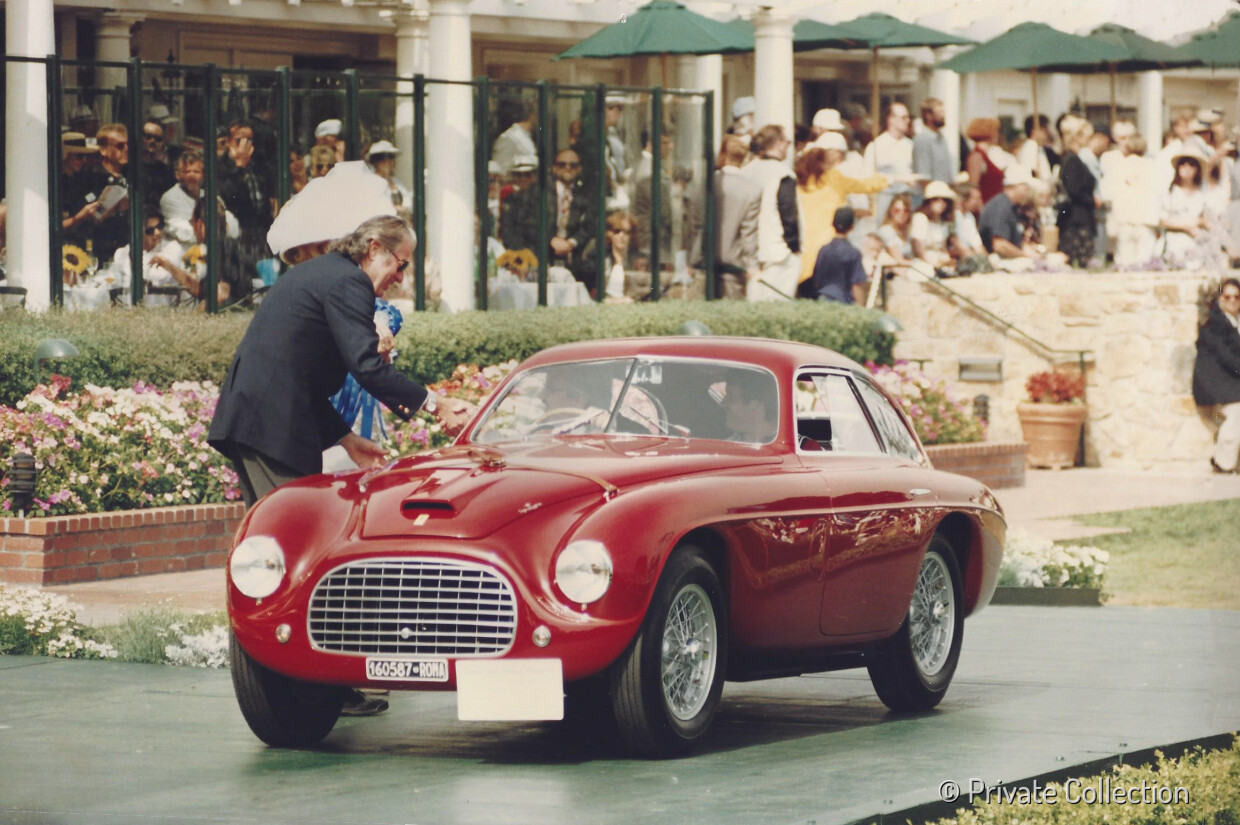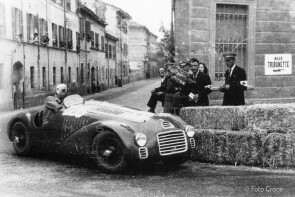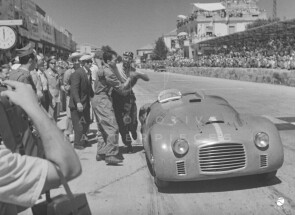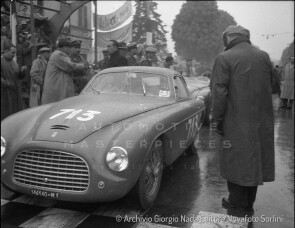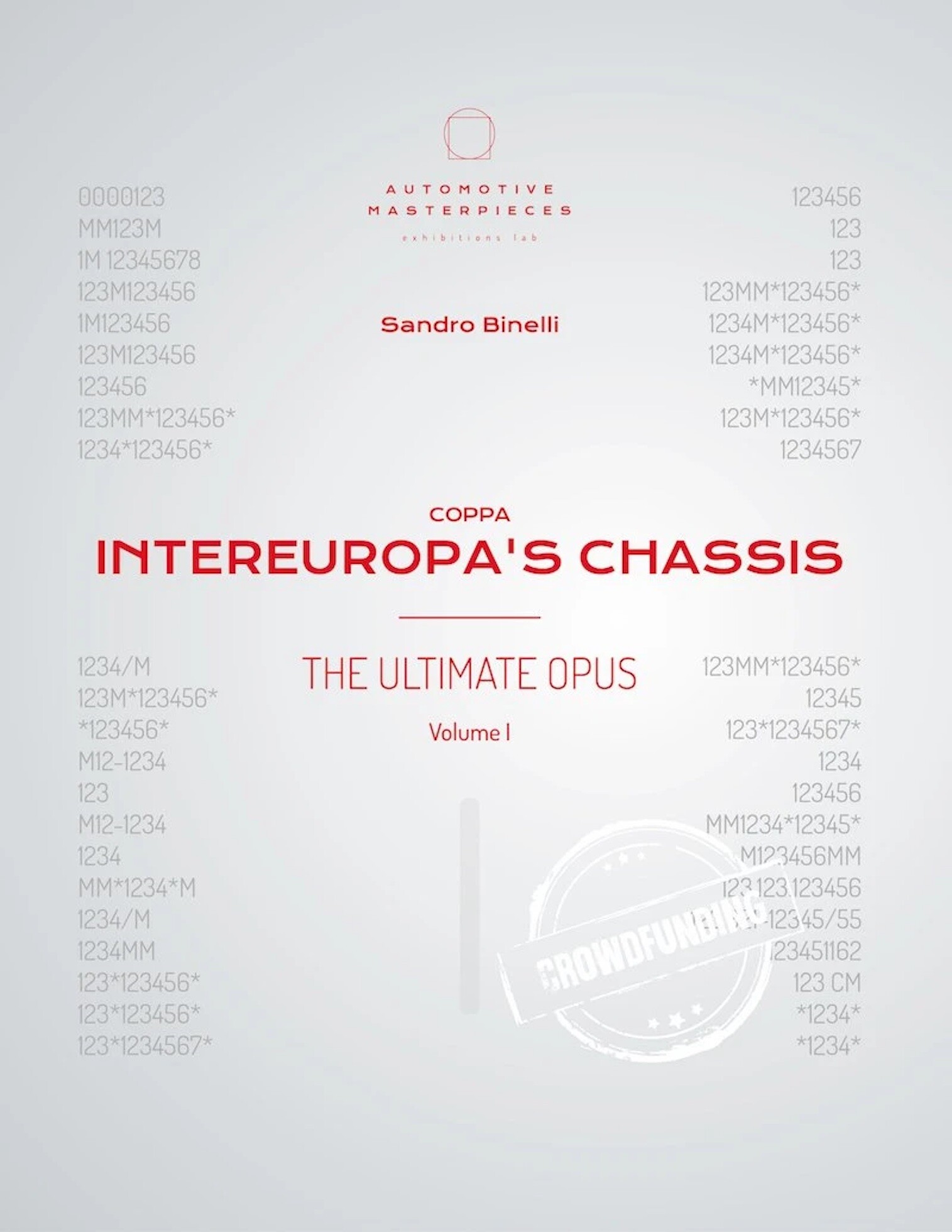
1947 Ferrari 125 S/166 millemiglia
ON/OFF
Why am I an Automotive Masterpiece?
D. Remaining cars from extremely limited production runs
1 of 2 manufactured
H. Works cars
Scuderia Ferrari (IT)
K. Famous chassis’ cars
The first chassis of Ferrari 125 S "barchetta" bodywork by Carrozzeria Touring
In 1939, after ten years at Alfa Romeo, where he had managed the racing department under the banner of “Scuderia Ferrari,” Enzo Ferrari left the "Casa del Portello" due to conflicts with the management. He then signed an agreement that prevented him from undertaking any competitive activity with the team brand for at least four years. This led to the birth, in 1940, of the company called Auto Avio Costruzioni, which produced the two 815 spiders. In 1945, free from the constraints of Alfa Romeo, Enzo Ferrari began to toy with the idea of a car that bore his name. He re-established relationships with some Alfa Romeo collaborators, including the technician Giuseppe Busso, the test driver Luigi Bazzi, and the designer Gioacchino Colombo. Enzo entrusted Colombo with the task of designing the first "real" Ferrari, which was born, after a long gestation, in the spring of 1947. Colombo and Ferrari abandoned the 815's in-line eight, partly developed from Fiat engine components, and agreed to develop a completely new and in-house 12-cylinder. This was an objective of the manufacturer after the experiences he had firsthand at Alfa Romeo around projects such as the 12 C single-seater in 1936. It appeared to be an advantageous choice, also in view of its possible use on Grand Prix category cars, with the simple use of a compressor. Gioacchino Colombo's first drawings date back to the summer of 1945, but the development proved to be long and complex, requiring numerous test sessions. Several test drivers, including Nando Righetti, took turns at the wheel of the 125 S, always under the watchful eye of Enzo Ferrari. From this work, the Ferrari 125 S took shape. The first engine of the "125 S," as soon as it was mounted on the chassis, was started by Enzo Ferrari on March 12, 1947, the date chosen in 2017 to begin the organization of the celebrations for the company's 70th anniversary. The newly designed engine was a 1.5-liter OHC V-12, with each cylinder having a capacity of 125 cc. This car inaugurated the Ferrari tradition of naming the model by the unit displacement. Power was delivered via three Weber 30DCF dual-barrel carburettors, and the gearbox was a five-speed, better able to exploit the power curves of the high-revving V-12. The traditional frame with side members featured independent wheels at the front and a live axle at the rear. With a power of 118 hp at 6800 rpm, the car had a top speed of around 170 kph. The 125 S debuted with Franco Cortese on May 11, 1947, on the Piacenza circuit. The first victory was on May 25 when Cortese won the Gran Premio di Roma. After just five months of activity, the palmarès already counted 6 successes out of 14 participations. In addition to being the first with the Ferrari brand, it was also the last car to take to the track with the old "Rosso Corsa Alfa Romeo" color that had always characterized Scuderia Ferrari cars. Subsequently, the Maranello team permanently adopted the "Rosso Corsa FIAT" for its cars, better known later as simply "Rosso Corsa."
To pay tribute to the first great success at the 1948 Mille Miglia, Ferrari wanted to produce a car unequivocally for competition, for the sports category; so, it upgraded the 166 Sport into the 166 millemiglia (aka MM). The millemiglia, like any other 166, sat on the Gilco dedicated tubular chassis and was fitted with the 2-liter V12, in this case capable of 140 hp at 6600 rpm: the exceptional power-to-weight ratio gave the car the qualities of an excellent racing car. The 166 millemiglia ensured Ferrari's prestige more than any other previous model, scoring many of Ferrari's first international victories and establishing the company as a great manufacturer of sports cars. In 1953, an evolution was developed that brought the power to 160 hp and other improvements. It is believed that a total of 48 millemiglia cars were built in two series, both in berlinetta and barchetta versions: 35 were from the first series and 13 from the (/53) second series. Most of the first series were aluminum-bodied by Carrozzeria Touring, with the Superleggera system: 25 barchetta and 6 berlinetta. A few others were bodied by Vignale, Zagato, Campana, and an example designed by Dino Ferrari realized by Scaglietti. Most of the 166 MM/53 were bodied by Carrozzeria Vignale: 5 barchetta and 3 Berlinetta, while the remaining cars were quite special: two barchetta bodied by Ferrari and Carrozzeria Autodromo, a barchetta Touring, a very special Berlinetta Abarth, and the last: a berlinetta Pinin Farina. The Ferrari 166 millemiglia Berlinetta (Touring), also known as Berlinetta "Le Mans," was built by Ferrari in 1950 in only 6 examples. Designed for racing, although slightly heavier than the Barchetta, featured an aluminum body crafted with the Superleggera design; it was intended to perform better in high-speed races, such as Le Mans, and was aimed to ensure better comfort during long-distance races, such as the Mille Miglia. The technical layout remained the same of the other 166 millemiglias. The combination of high power and relative lightness endowed the Berlinetta with the qualities of an excellent racing car.
The historical importance of the 125 S, the first Ferrari-branded car, is undoubtedly of the utmost significance. However, despite its well-documented journey, clarifying details about its first year of existence in 1947 is challenging. The manufacturer lacks precise information on the actual number of "125 S" chassis produced and their use in early competitions. Moreover, there are no known reliable sources to support this research. Currently, only two chassis are known and exist, namely #01C (later #010 I) and #02C (later #020 I). The existence of two additional chassis, #03C and #04C, is currently unconfirmed, leading to the belief that competitions in 1947 were primarily divided between the two known chassis. Their paths in 1947 have been intertwined thus far. However, based on our research, it can be argued that the Ferrari 125 S with chassis no. "02C" started as a barchetta with a Touring body before evolving into its current "166 millemiglia" berlinetta type conformation with chassis no. "020 I." In contrast, chassis no. 01C always maintained a "siluro" shape with motorcycle fenders on open wheels. Photographic documentation of the 1947 Mille Miglia reveals elements of continuity with the years to come. A notable difference between the two cars is the absence of a driver's side air intake on the 02C, while it consistently appears in the evolution of the 01C. To support our hypothesis, a 1947 picture of the original dashboard of the 125 S barchetta before the start of the Mille Miglia reveals features of continuity and an evolution that can be traced throughout the life of chassis no. 02C, distinguishing it from its sister car 01C with open wheels. Chassis no. 02C still features Houdaille dampers, believed to be the original ones, differing from the older type dampers fitted on the "sister" car 01C, visible in various pictures of the era. This fact further supports the belief that the car (02C) > 020 I was originally a 02C barchetta and not a 01C open wheeler. Registered to Enzo Ferrari himself, chassis no. 02C began its racing career immediately at the Circuito Automobilistico di Piacenza in May 1947. Enrolled by Scuderia Ferrari and driven by the first Ferrari racing and test driver Franco Cortese, the car achieved its first success by winning the Gran Premio di Roma. In June 1947, the car faced its first Mille Miglia, the first of its four, always driven by Cortese, together with Adelmo Marchetti. Under the aegis of Scuderia Ferrari, chassis no. 02C participated in many races with Cortese or Nando Righetti. It was again at the Mille Miglia in 1948, with the same Cortese-Marchetti crew, though it was unlucky for the second time. In this event, the car retained its original barchetta body but received significant updates, including front air intakes for cooling the brake system and an aerodynamically sculpted engine air intake on the hood. The front grille was less squared, especially in the upper and lower parts, which were decidedly curved. Ventilation for the driver and co-driver was facilitated by two cuts in the bodywork under the small windshield and a central flap on the car body between the passenger compartment and the bonnet. This bodywork update is believed to be the work of Allemano. The characteristic grille and air intake on the bonnet were attributed to Allemano, as seen on the Ferrari 166 S coupé, racing number #16 at the 1948 Mille Miglia, driven by Biondetti - Navone. In 1949, chassis no. 02C became the property of Franco Cornacchia, a racing driver and the first Ferrari dealer. He recovered the chassis abandoned by the factory, and by late 1949, the car underwent updates supervised by Cornacchia. The transformation changed the car from a "barchetta" into a "berlinetta" coupé bodied by Carrozzeria Touring. During this transformation, the "punched" chassis number was likely updated: it is believed that, in serial number 02C, the "C" was transformed into a "0," and a space and an "I" were added. While the chassis remained that of the original 125 S, the engine evolved into the 166, and the bodywork was replaced with the Touring berlinetta (known as Le Mans). The first race with this conformation was the 1950 Coppa Intereuropa, where Cornacchia achieved 3rd Overall and 2nd in Class. In April, he sold the car to Giovanni Rota, in time for the 1950 Mille Miglia. Rota also participated in the 1951 Mille Miglia, the fourth for the car, which presumably continued to race up to 1952. In the mid-1950s, the car crossed the ocean, changing owners, often landing in the hands of U.S. racing drivers. The car has consistently received care and attention, making appearances at Laguna Seca events and the Pebble Beach Concours since the 1970s. Over the years, it has been featured in numerous publications and elegance competitions. It achieved 1st in class (M) at the 1995 Pebble Beach and "Gold" at the 1996 Cavallino Classic. Sold for $910,000 in 1999 at Christie's Auction "Exceptional Motor Cars," chassis no. 02C became part of an important car collection, continuing to participate in concourses d'elegance and being featured in publications, such as the "Mille Miglia’s Chassis" Volume III book by Automotive Masterpieces.
